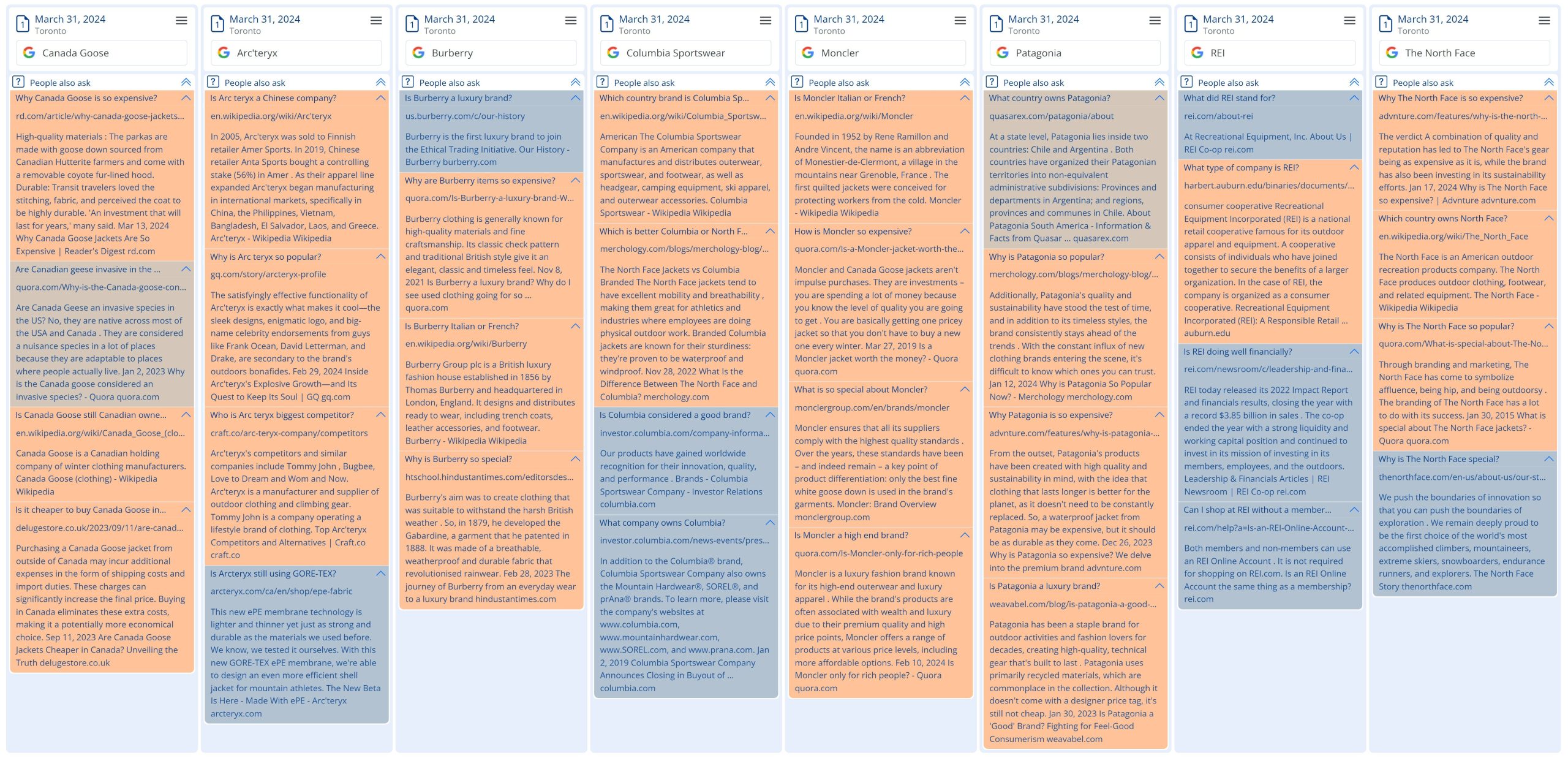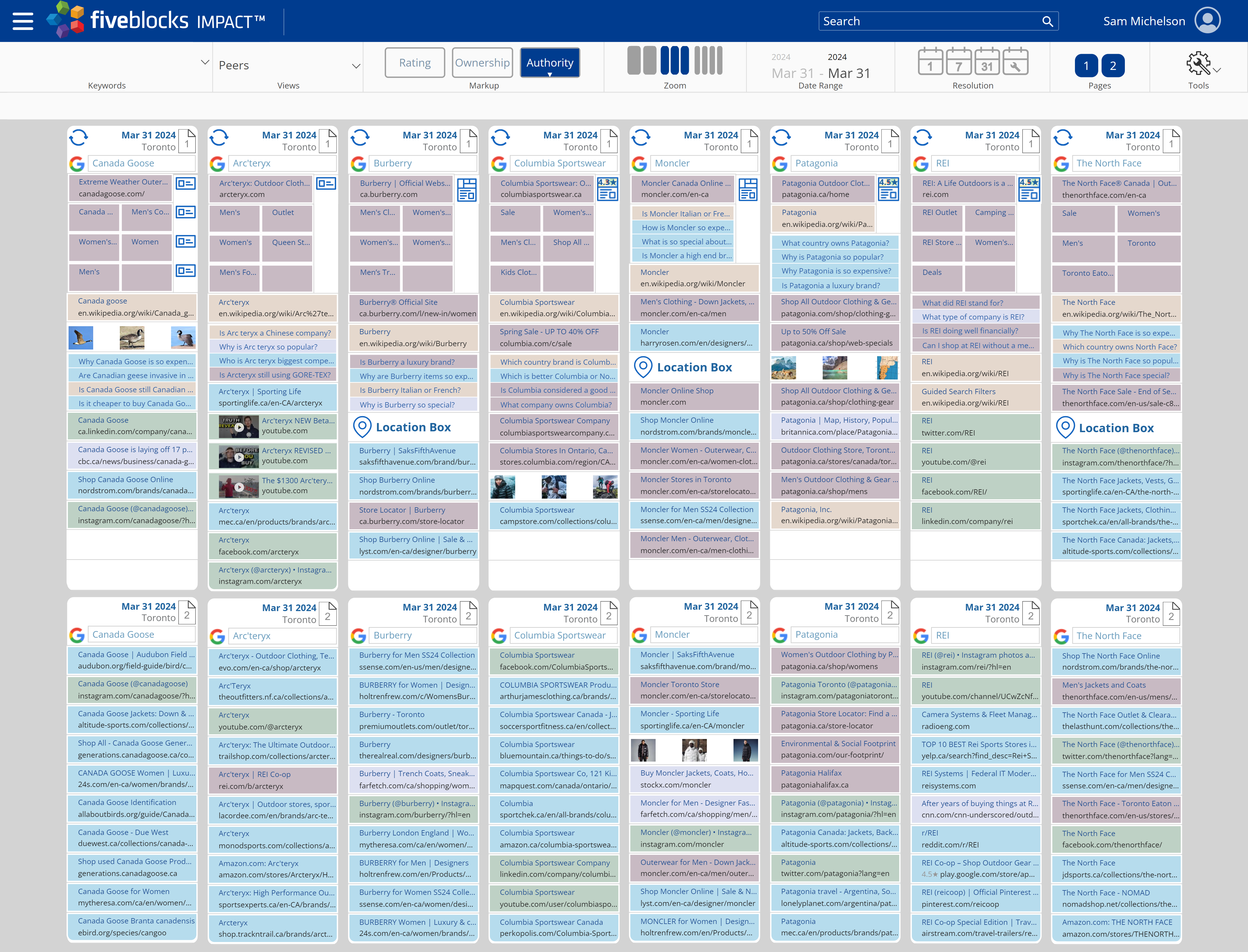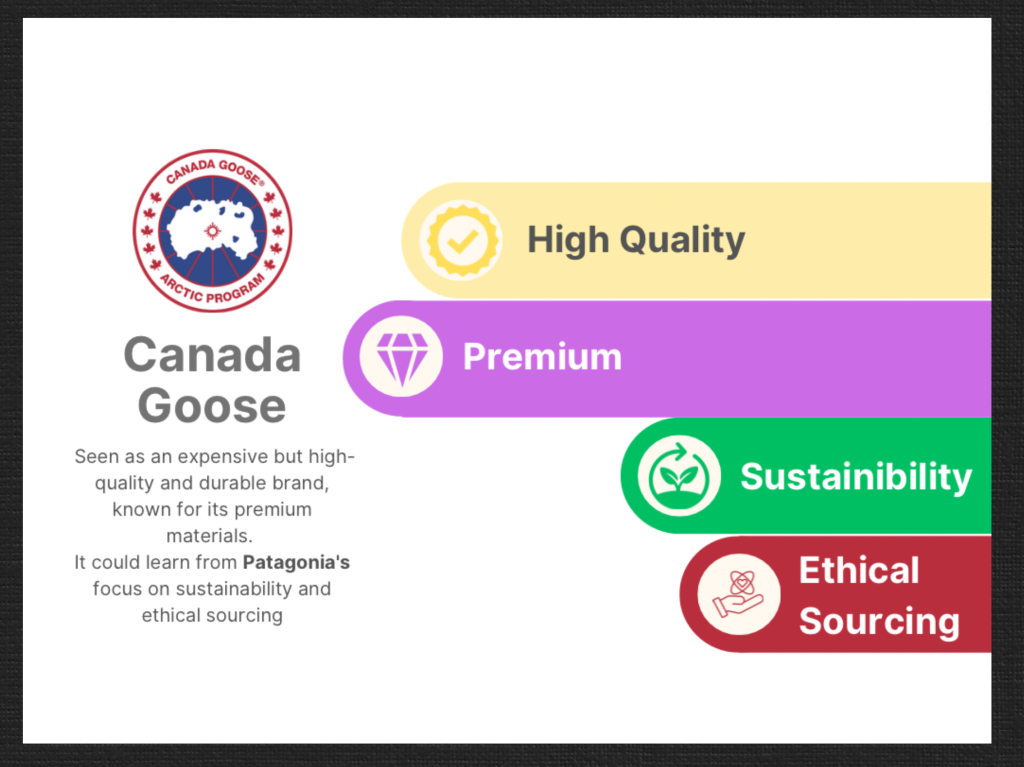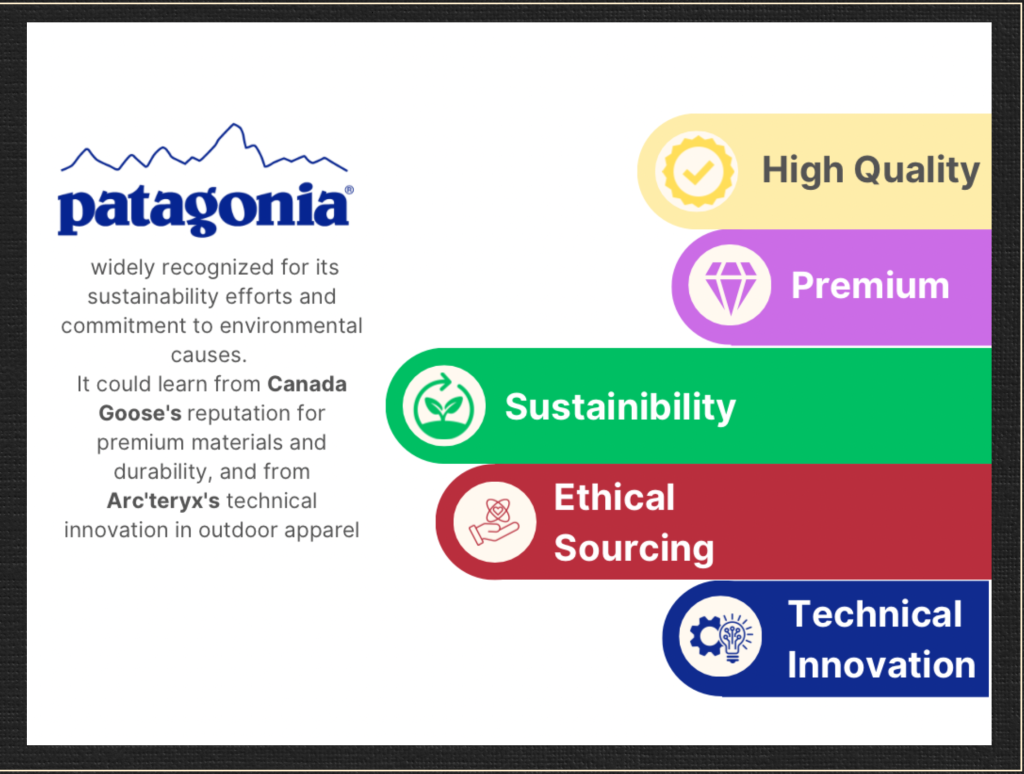Unlocking Stakeholder Perception of your Brand Using Google Search Data and AI
Communications and PR professionals often rely on social media and earned media to gauge public perception of their brands or those of their clients. However, there’s a wealth of information hiding in plain sight that can provide even deeper insights into what people really think about your brand and your competitors: Google search results data.
By analyzing the search results for your brand and your competitors, you can uncover patterns of thought, and identify the questions and concerns that your stakeholders have. This is because Google’s algorithm depends on satisfying as many of the searchers as possible. This means that Google is already working to understand what people think and what they want to know. Tapping into this information can be invaluable in making decisions that shape your online presence and addressing potential challenges head-on.
One of the most prominent examples of AI in action on Google’s search results page is the People Also Ask feature. This section typically includes four questions and answers that Google deems most relevant to the search query. By examining these questions across multiple brands in your industry, you can gain a general understanding of what people are thinking and what they want to know about your brand and your competitors.
To demonstrate the power of this approach, we used Five Blocks IMPACT™, our tracking and analytics platform, to analyze the search results for several outdoor sportswear brands like North Face, Columbia, and Patagonia on March 31st in North America. We then used an AI to identify patterns in the People Also Ask sections and summarize how each brand is perceived, as well as any obvious challenges and potential lessons from their peers.
 The People Also Ask Questions and Answers collected automatically by Five Blocks IMPACT and then used for this analysis.
The People Also Ask Questions and Answers collected automatically by Five Blocks IMPACT and then used for this analysis.
The analysis revealed some surprising insights. For example, searchers seemed particularly concerned with where each company is based. But the AI went much further, characterizing how each brand is seen by stakeholders, based on the questions asked and providing recommendations for what they could learn from their competitors. While AI models can make mistakes, we found this to be a fascinating instantaneous analysis.
 A visualization of search results for various sportswear brands as seen in Five Blocks IMPACT and used for this analysis.
A visualization of search results for various sportswear brands as seen in Five Blocks IMPACT and used for this analysis.
Here are the conclusions that the AI model provided:
Canada Goose
- Seen as an expensive but high-quality and durable brand, known for its premium materials.
- Can learn from Patagonia’s focus on sustainability and ethical sourcing.
Arc’teryx
- Perceived as a popular and functional outdoor brand, with some questions around its Chinese ownership.
- Can learn from Canada Goose’s reputation for premium materials and durability, and from Patagonia’s environmental initiatives.
Burberry
- Firmly established as a luxury fashion brand, with questions about its history and store locations.
- Can learn from Arc’teryx’s technical expertise in outdoor apparel and from Patagonia’s commitment to sustainability.
Columbia Sportswear
- Seen as a good mid-range outdoor brand, often compared to The North Face.
- Can learn from Arc’teryx’s focus on technical performance and innovation, and from Patagonia’s sustainability efforts and brand purpose.
Moncler
- Perceived as a high-end luxury brand, known for its expensive but high-quality winter wear.
- Can learn from Patagonia’s transparency and ethical practices, and from Arc’teryx’s technical expertise in outdoor gear.
Patagonia
- Widely recognized for its sustainability efforts and commitment to environmental causes.
- Can learn from Canada Goose’s reputation for premium materials and durability, and from Arc’teryx’s technical innovation in outdoor apparel.
REI
- Seen as a reputable outdoor co-op.
- Can learn from Patagonia’s strong brand purpose and environmental initiatives, and from Arc’teryx’s technical expertise in outdoor gear.
The North Face
- Perceived as an expensive but high-quality outdoor brand, with some questions about its popularity and branding.
- Can learn from Patagonia’s sustainability efforts and brand purpose, and from Arc’teryx’s technical innovation in outdoor apparel.
Using only Google Results of peers, we can then paint a picture of how Google, and perhaps their searchers, see each brand.
A visualization of what we learned using this Data and AI analysis of the Google Results.
Using AI-powered search data analysis, brand and communications directors can identify areas where their brand’s image might not align with their goals and adjust their digital reputation management strategy accordingly. This data serves as a kind of insightful preliminary focus group, providing valuable insights that can be tracked over time.
In today’s fast-paced digital landscape, staying on top of how your brand is perceived is more important than ever. Leveraging the power of AI and search data analysis, you can uncover hidden insights, address potential challenges, and ensure that your brand is resonating with your target audiences.
Five Blocks specializes in digital reputation management, combining cutting-edge technology and personalized service to help our clients overcome digital reputation challenges. Our advanced data analysis and AI-powered insights allow us to identify the root causes of various issues and uncover overlooked opportunities for improvement. We work closely with your communications team to develop and implement sustainable solutions that deliver long-lasting results. For more information or to see what we can do with your brand’s data, contact us.


